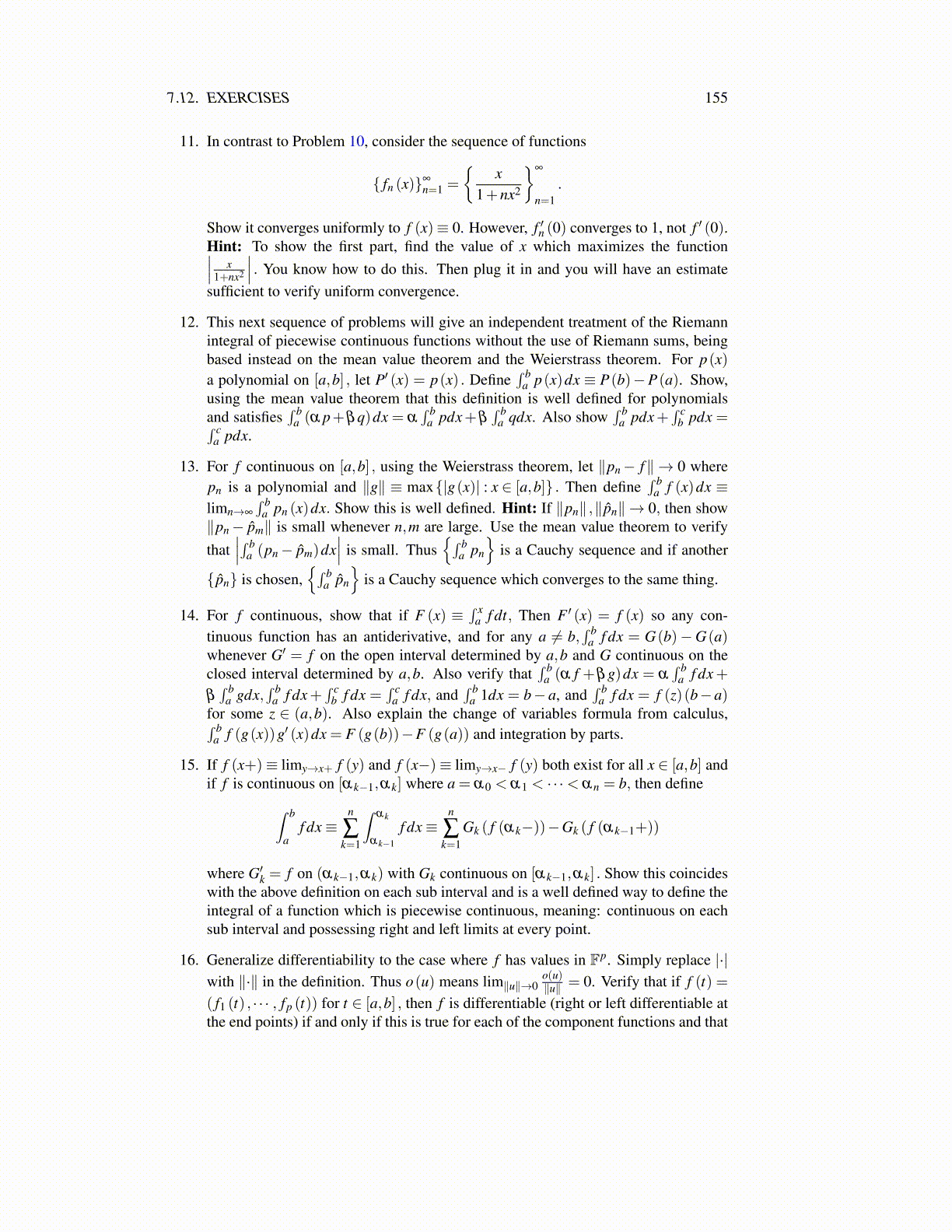
Chapter 8
Power Series8.1 Functions Defined in Terms of Series
It is time to consider functions other than polynomials. In particular it is time to give amathematically acceptable definition of functions like ex,sin(x) and cos(x) . It has beenassumed these functions are known from beginning calculus but this is a pretence. Moststudents who take calculus come through it without a complete understanding of the circu-lar functions. This is because of the reliance on plane geometry in defining them. Fortu-nately, these functions can be completely understood in terms of power series rather thanwretched plane geometry. The exponential function can also be defined in a simple mannerusing power series. It is tacitly assumed in this presentation that x ∈ F, either R or C.
Definition 8.1.1 Let {ak}∞
k=0 be a sequence of numbers. The expression,∞
∑k=0
ak (x−a)k (8.1)
is called a Taylor series centered at a. This is also called a power series centered at a. It isunderstood that x and a ∈ F, that is, either C or R.
In the above definition, x is a variable. Thus you can put in various values of x and askwhether the resulting series of numbers converges. Defining D to be the set of all values ofx such that the resulting series does converge, define a new function f defined on D havingvalues in F as f (x)≡∑
∞k=0 ak (x−a)k . This might be a totally new function, one which has
no name. Nevertheless, much can be said about such functions. The following lemma isfundamental in considering the form of D which always turns out to be of the form B(a,r)along with possibly some points z such that |z−a|= r. First here is a simple lemma whichwill be useful.
Lemma 8.1.2 limn→∞ n1/n = 1.
Proof: It is clear n1/n ≥ 1. Let n1/n = 1+ en where 0 ≤ en. Then raising both sides tothe nth power for n > 1 and using the binomial theorem,
n = (1+ en)n =
n
∑k=0
(nk
)ek
n ≥ 1+nen +(n(n−1)/2)e2n ≥ (n(n−1)/2)e2
n
Thus 0≤ e2n ≤ n
n(n−1) =1
n−1 . From this the desired result follows because∣∣n1/n−1
∣∣= en ≤1√n−1
.
Theorem 8.1.3 Let ∑∞k=0 ak (x−a)k be a Taylor series. Then there exists r≤∞ such
that the Taylor series converges absolutely if |x−a| < r. Furthermore, if |x−a| > r, theTaylor series diverges. If λ < r then the Taylor series converges uniformly on the closeddisk |x−a| ≤ λ .
Proof: Note limsupk→∞
∣∣∣ak (x−a)k∣∣∣1/k
= limsupk→∞ |ak|1/k |x−a| .Then by the roottest, the series
converges absolutely if |x−a| limsupk→∞ |ak|1/k < 1diverges spectacularly if |x−a| limsupk→∞ |ak|1/k > 1.
155